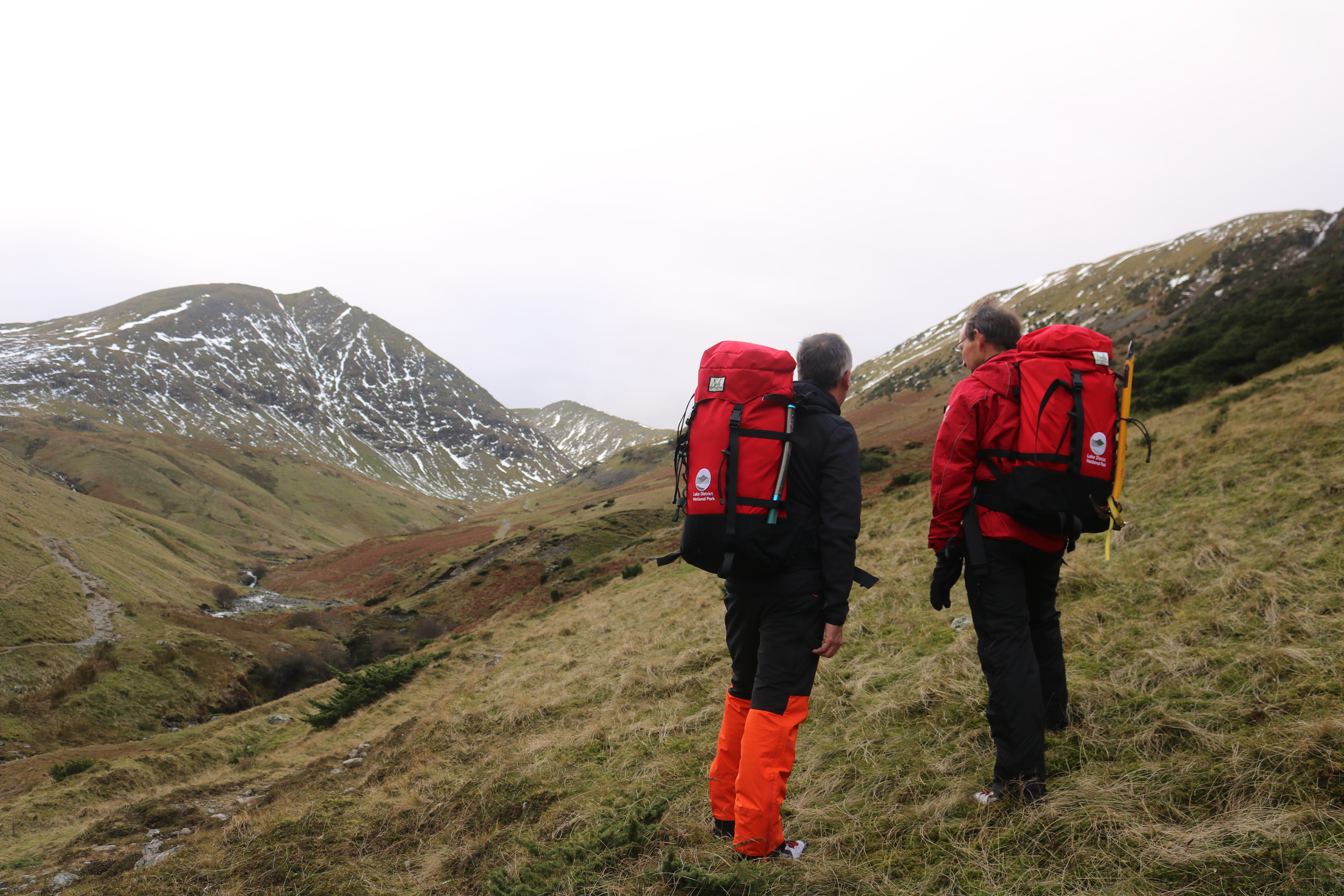#summitsafely week 20 – select the right rucksack for you
It's week 20 of the 20 week #summitsafely campaign. This week’s #summitsafely top tip – select the right rucksack for you.
Our pals at Aiguille Alpine Equipment have looked after our two Fell Top Assessors all season with tailored made rucksacks to help them carry out their job. This is the final week on the #summitsafely campaign and the team have provided finale blog post about how to select the right rucksack for you.
Selecting the right rucksack depends on many factors both individual and environmental. The choice offered on the market can seem to some quite bewildering.
Rucksack Back Sizes
At Aiguille they believe that one back length of rucksack cannot possibly fit everybody. They tend to use height as a start point for back length as people’s interpretation of points of reference on the back does tend to be very variable. As a guide:
- Lady Short: 5’ 2”(157cm) – 5’ 6” (168cm)
- Lady Standard: 5’ 6” (168cm) – 5’ 10” (178cm)
- Short: 5’ 4” (163cm) – 5’ 8” (173cm)
- Standard: 5’ 8” (173cm) – 6’ (183cm)
- Long: 6’ (183cm) – 6’4” (193cm)
This assumes that you are in proportion, legs to back. Most people would already be aware of any issues with this due to problems with getting clothing to fit. If you are not, or are unsure, Aiguille Alpine Equipment suggest you pick up the phone and give them a call.
Walking/Trekking Rucksacks
Climbing and mountaineering involve lots of walking. ‘Walkers’ or ‘trekkers’, therefore, are using a rucksack in much the same way as ‘climbers’ or ‘mountaineers’ use a sack for a large portion of their time. Consequently, walkers and trekkers do, in many ways, ask the same from their sacks:
- Hardwearing yet lightweight.
- Comfortable and supportive back and hip belt system, appropriate to the loads being carried.
- Pocket/s to take car keys, head torches and Mars bars.
- Ice axe loop/s for that walk up Snowdon in snowy conditions when an ice axe is advisable and useful.
- Wand pockets on the side to take trekking poles.
Climbing/Alpine Rucksacks
At Aiguille they often first ask you what is the main end use for the rucksack. Try to be brutally honest with yourself at this point. If, for example, you use your sack for summer cragging and Scottish winter buy a sack for that end use. The fact that you may be hoping to spend a couple of weeks in the Alps in two years’ time should be the time to compromise with your sack, not the other way around. By buying a sack principally for the Alpine trip (which may never happen) you compromise the main use of summer cragging and Scottish winter.
Expedition Rucksacks
From the high Himalayas and Greenland’s frozen ice cap to Scotland`s West Highland Way, our expedition rucksacks have been used on numerous expeditions around the world offering unrivalled performance and reliability when carrying seriously heavy loads.
The first thing to think about when looking at an expedition sack is, as with any rucksack, what you are predominantly going to use it for.
Construction and Capacity
What makes Aiguille products so special? Talk to people who own one of their products and one of the first things they will tell you is how well constructed everything is. They will also probably say that they are simple and not over featured. In our view it has to be this way. Any one of our pieces of equipment could end up in a situation where a failure could be potentially disastrous. How many times has a strap pulled out or a seam come undone? Not with Aiguille, we have an enviable record for product reliability. So how do they do it?
Well to start with, everything is manufactured on their premises in the English Lake District. Here they stringently monitor all processes to ensure quality at every stage of production. Every part is individually marked out and cut by hand to ensure accuracy. You may notice chalk lines on finished articles, don`t worry it easily rubs off with use.
Next is the materials that they select which will have a great influence on the performance of your rucksack and its longevity. They only use nylon fabrics as, although more expensive than polyester, they offer greater strength and abrasion resistance. Cordura/Kevlar blends which they have also examined, in thei opinion, have more negatives than they do positives. Other `fittings` such as zips, buckles, thread, webbing etc. are all selected for their quality not price, YKK zips, National Moulding Buckles, for example.
Then each part is checked again during assembly by the machinist, these people are highly skilled and have years of experience of rucksack manufacture. On their rucksacks they ensure that every main seam has a minimum of three rows of stitching with at least five rows over any stressed areas such as compression straps, wand pockets, etc. All main seams are also bound to ensure the long life of the rucksack.
Once the product is assembled, it is then hand finished and finally checked once again, only when they are completely satisfied does leave Aiguille. After all they only want to see their products out there performing trouble free for years to come.
So our top tip this week is select the right rucksack for you.
Check out this awesome video of Chris Moore from Aiguille Alpine Equipment explaining how to fit the right rucksack for you:
Date: 24 Apr 2017



